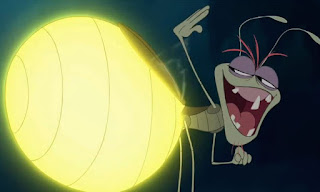Marine Creature of the Month MAY
Nudibranch
 |
| Photo credit: Dive the World |
Kingdom: Animalia
Class: Gastropoda
Conservation Status: Not Evaluated (NE) [As far as I can tell]
Found: Worldwide; salt water, occasionally brackish water
Diet: Carnivorous
Size: 0.25-12 inches
Weight: Up to 3.3lbs
Habitat: Seabed, depths from intertidal zones to 700m (2,300ft)
Nudibranch are a vastly diverse species inhabiting our oceans, with 3,000 valid species so far. They are everywhere, in any type of sea. They are found in tropical waters, temperate waters, even the cold (cold) waters of the both Poles. New species are even being found at depths of 2,500m (8,200ft). Everywhere! While they are most diverse in shallow, warm waters, there are two main types of nudibranch: Dorids and Aeolid. They have distinct defining features, which I shall get into later. (I feel you need a little more information first!)
Most species are benthic. This means they are found on the substrate, which is fancy for the seabed. There are, of course, a few exceptions; like pelagic species which live in the waters colum or one which lives upside down just below the ocean's surface. Nudibranch are known for the vast array of colours and shapes they take. I believe the best way to exhibit this is to show you.
 |
| Taken from #MCotM May on Pinterest aka not my photo |
So what are these weird rainbow slugs? Well, urm, exactly that. They are a type of sea slug which live their adult life without a shell. Why are they so colourful? Because of what they eat. Like with their habitat, Nudibranch are not fussy about what they eat. They'll eat anything from algae to coral to other Nudibranch, and everything in between! Maybe we should call them "om-nom-nomivores".
What they eat influences their colouring, but they also have developed them as a defense mechanism. Some use their colour and textures to blend in with their environment to avoid predators. This is not utilised by all species and has caused much debate amongst scientists. It could just be that their colour comes purely from their diet.
One defense mechanism which is not under debate does involve their diet. Certain Nudibranch eat prey which should be toxic to them, but instead they accumuate and retain the chemicals to secrete as a means of defense, through appendages called cerata. The Aeolid branch of their evolution are identified by the use of cerata placed on their back. Why the toxic substances do not hurt the Nudibranch is unknown, but it is suspected it functions on a cellular level with the help of large vacuoles, an organelle in cells. The toxic substance stored in their bodies also makes them distasteful to predators.
That, or they'll excrete an acidic mucus if you touch them. These guys are badass. Why has there been no comic book villain called Nudibranch Man? This is perfect fodder! I also think they look monsters you fight in the Final Fanasty series!
As I have mentioned what defines the Aeolids, I should probably mention the Dorids. Nudibranchs breathe through "naked gills" which present as brachial plumes, rosette shaped, on the backs of Dorids. In the picture above, you can see these two clear definitions between the different types of Nudibranch. I count two Aeolids and eight Dorids, do you agree?
Nudibranch have poor eyesight, to the point where they can only determine if it is light or dark. To make up for this, they have very sensitive tentacles on their heads called rhinophores. These detect odours which they can use to hunt down their prey.
 |
| Photo from Reddit |
All Nudibranchs are hermaphrodites, meaning they have no gender. They possess both reproductive organs on their right side and can mate with any mature member of their species. They cannot, however, self fertilise; it takes two Nudibranch to tango, as it were. Being non-mammalian, they lay eggs. As their life span ranges from one month to one year, depending on species, they reach maturity quickly.
Fantastic little critters, aren't they? I can see why Carole likes them so much.
 |
| My Nudibranch mount on Habitica and a golden octopus. |
Fun Facts:
- Nicknames for Nudibranch include: Clown, Marigold, Splendid, Dancer, and Dragon.
- Pronounced "NEW-di-bronk". (Have you been reading "branch" this entire time? Me too.)
- There are a few colourless species.
- Many are nocturnal.
- Two species emit a sound loud enough to be heard by humans.
- They have shells in their larval stages, and shed them for adulthood.
- Some eat the symbiotic algae which live on corals and use them for photosynthesis, another food source. This is called kleptoplasty.



Comments
Post a Comment